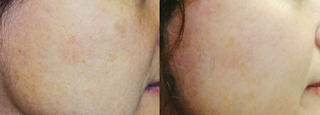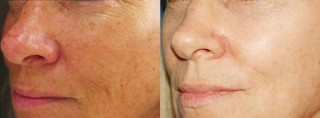
q-Switch Nd: YAG Laser for Melasma
WHAT CAUSES MELASMA?
When the melanocytes in your skin are stimulated, it begins producing large amounts of melanin which starts grouping in patches on your skin, often on the face – this is known as melasma. Women tend to be more at risk from this condition, with men only accounting for 10% of melasma patients. Overexposure to the skin, hormonal changes and even some beauty products that cause skin irritation can be culprits that cause this skin condition.
Pregnant women may also contract melasma, which is also known as a pregnancy mark. The increase in hormones that trigger melanocytes in the second and third trimesters often cause this, but it is thought that higher levels of progesterone are the cause of melasma instead of oestrogen, which is backed by medical research.
HOW IT WORKS
The q-Switch Nd:YAG laser will target areas that suffer from melasma with high energy light. Removing the top skin layer, this allows a newer one to grow over it. Since the laser can penetrate deep into the skin without harming the top later, this stimulates the skin into producing fresh collagen and essential proteins that it needs for self-repair.
This laser treatment is relatively swift and painless, and is suitable for all types of skin since it also helps to lighten your skin tone. It can improve your skin’s complexion, making it look much fairer and smoother after treatment.
This treatment may not be suitable if:
- There is an infection or dermatitis in the treatment area
- You are pregnant
- Experiencing abnormal wound healing or keloid scarring
- Using light sensitising medication
- You are prone to light-triggered seizures
POST-TREATMENT
As no downtime is needed for this treatment, you may continue with your daily routine after the session. There will be no swelling, scars or bruises, and no major side effects are cause by the laser treatment. Some mild skin redness may be experienced, but this should subside within 30 minutes or so.
The results will be visibly improved after several months, as well as after each subsequent session. Typical treatment cycles consist of 6 sessions spaced 2 weeks apart, but this will change from person to person as it is dependent on the overall condition of the skin.
BEFORE / AFTER







